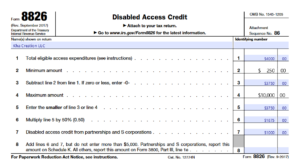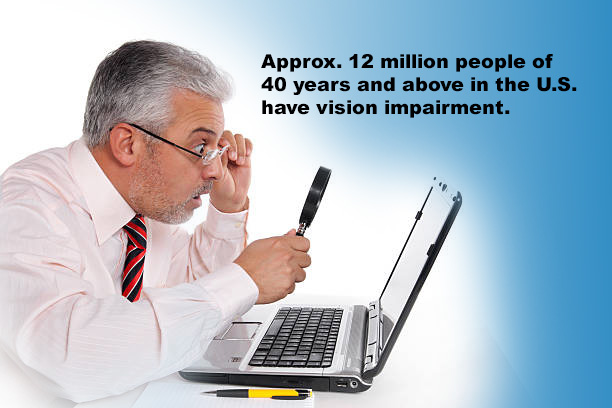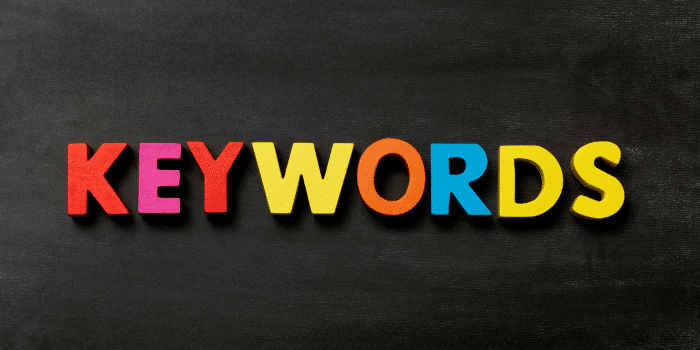A business website is created to provide meaningful information to potential customers, allow access to important updates and expand business reach. If your website is not accessible to its intended users as recommended by ADA Website Accessibility Standards, you may face serious legal troubles.
This article brought to you by Kha Creation covers the fact – not widely known – of how making your business website ADA Compliant can benefit you with IRS Tax Credit.
In accordance with the Americans with Disabilities Act (ADA) and Web Content Accessibility Guidelines (WCAG) it is mandatory now for business, legal, practical, and moral reasons. Many industry leaders, however, hesitate to make the vital ADA compliance website updates because of the staggering costs they may incur. Thanks to the recent amendments to the federal code, you could now be eligible for up to $5,000 ADA tax credit and/or ADA tax deduction for ADA website compliance costs.
With this recent incentive from the IRS, now just may be the time to make your website ADA Compliant!
What is ADA Compliance And What Does It Mean For Your Website?
ADA compliance is short for the Americans with Disabilities Act Standards for Accessible Design. What that means is that all electronic information and technology—i.e, your website—must be accessible to those with disabilities. These standards require companies to offer and maintain sites that people with disabilities can use and access.
When schools and businesses closed due to Covid-19 Pandemic, the public turned to the web for education, services, information, supplies and even to get access to their jobs.
Now what was discovered is that these websites and apps could not be used by people with disabilities.
The Web is fundamentally designed to work for all people, whatever their hardware, software, language, location, or ability. When the Web meets this goal, it is accessible to people with a diverse range of hearing, movement, sight, and cognitive abilities.
Thus the impact of disability is radically changed on the Web because the Web removes barriers to communication and interaction that many people face in the physical world. However, when websites, applications, technologies, or tools are badly designed, they can create barriers that exclude people from using the Web.
Web accessibility means that websites, tools, and technologies are designed and developed so that people with disabilities can use them. More specifically, people can:
- perceive, understand, navigate, and interact with the Web
- contribute to the Web
Web accessibility encompasses all disabilities that affect access to the Web, including:
- auditory
- cognitive
- neurological
- physical
- speech
- visual
The WCAG is an internationally recognized set of guidelines for digital accessibility. It was established and is managed by the international web standards group, the W3C.
What Happens if your Website isn’t ADA Compliant?
Unfortunately, however, if your website isn’t ADA accessible, you are liable. Even if you unintentionally skipped the guidelines provided by the U.S. Department of Justice, you could still end up paying thousands of dollars in lawsuits if a person with a disability claims they cannot access your website. In addition to a lawsuit, you’ll also be facing the following for being non-compliant with ADA compliance standards:
- Legal fees
- A possible settlement
- A possible public relations problem
- The costs involved in rebuilding your website so that it’s ADA compliant
Here are some well-known incidents of businesses getting sued for not having ADA compliant websites:
In 2016, a blind man named Guillermo Robles sued the popular pizza chain – Domino’s in federal District Court in California. Robles was not able to book a pizza from neither Domino’s website nor mobile app. He was using a screen reading software to browse the websites, but Domino’s website and mobile application were not compatible with it. Further, Robles mentioned that there was a website-exclusive promotion, which he was not able to claim. In their defense, Domino’s said without federal standards, they did not know how to comply with these guidelines.
The Ninth Circuit Court ruled the case in favor of Robles asserting that “The alleged inaccessibility of Domino’s website and app impedes access to the goods and services of its physical pizza franchises – which are places of public accommodation.”
Another case of ADA lawsuits involves non-other than Hollywood A-lister Beyoncé Knowles. Beyonce owns a website that regularly posts news related to San Francisco Bay Area, her tour dates, and merchandise listed on sale.
In 2019, a visually impaired woman named Mary Conner filed a lawsuit against Beyonce’s company – Parkwood Entertainment. She claimed that Beyonce’s website Beyonce.com denied equal access to visually impaired users. Beyonce.com failed to comply with multiple WCAG guidelines such as lack of keyboard navigation, missing alt text on images, no accessibility to drop-dow menus, etc. This case is still pending any verdict but it will be fascinating to see how this case impacts other business websites.
For the past two years, the WebAIM project at the Center for Persons with Disabilities at Utah State has run accessibility tests on homepages of the top million websites. The 2020 report revealed that 98.1% of homepages had detectable Web Content Accessibility Guidelines (WCAG) 2 failures. The fact is, unless a website is specifically designed and built to enable accessibility, it just isn’t. And the growing awareness that digital accessibility as a civil right is putting greater pressure on website owners to address these issues, or face legal actions.
Tax Credit Eligibility and Filing. EARN TAX CREDIT UPTO $5,000!

According to the ADA, businesses and organizations are required to remove the “obstacles” that restrict people with disabilities from accessing and enjoying the perks of various “places of public accommodation,” including stores, theaters, bars, hotels, schools, and recreation facilities. Improving access to places of public accommodations, however, can be very costly.
Through the IRS Code Section 44, Disabled Access Credit, your small business can qualify for a tax credit for increasing website accessibility and making other accommodations to make your business more usable to persons with disabilities. Companies also enjoy a tax credit of up to 50% on costs. The eligible costs for tax credits include the cost of modifying devices and equipment, auxiliary aids, etc. However, the tax credit is a one-time incentive and applies only for expenses to the extent of $10,250.
Section 44 ADA tax credit of the IRS Code recognizes the additional costs of making ADA-related compliance adjustments. To assist businesses in complying with the ADA, the federal code allows organizations that incur expenses for making ADA accommodations to qualify for up to $5,000 ADA compliance tax credit.
Claiming the tax credit is simple using IRS Form 8826 (Disabled Access Credit). Your accountant or tax specialist can confirm you qualify and that you have eligible expenses (listed on the second page of Form 8826).
Need Help Becoming ADA Compliant?
While the path to ADA website compliance may appear daunting. Understand that it can be approached in phases. At Kha Creation, we provide comprehensive ADA compliance services to help more companies and institutions claim their ADA compliance tax credit and gain a competitive edge.
Our experienced web design and development team can ensure your website meets Web ADA standards. Learn more about how our team can help by Contacting us online or Calling us at (925) 338-9117 today!








